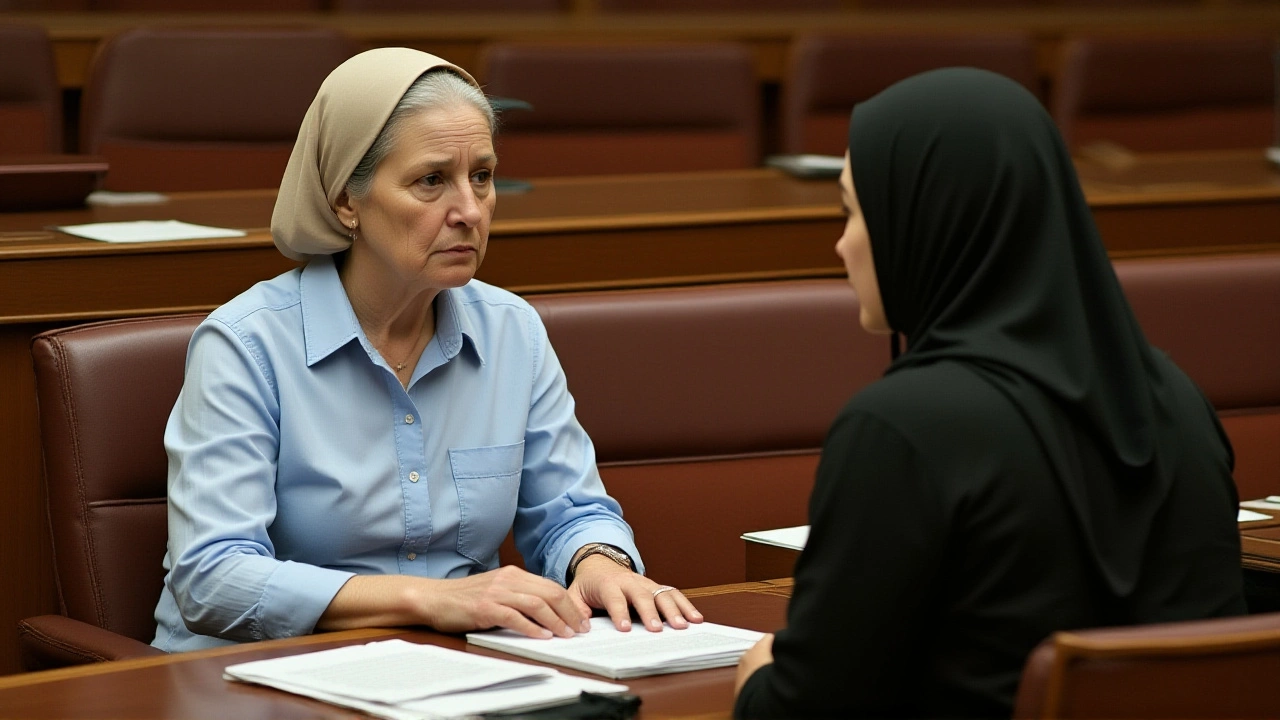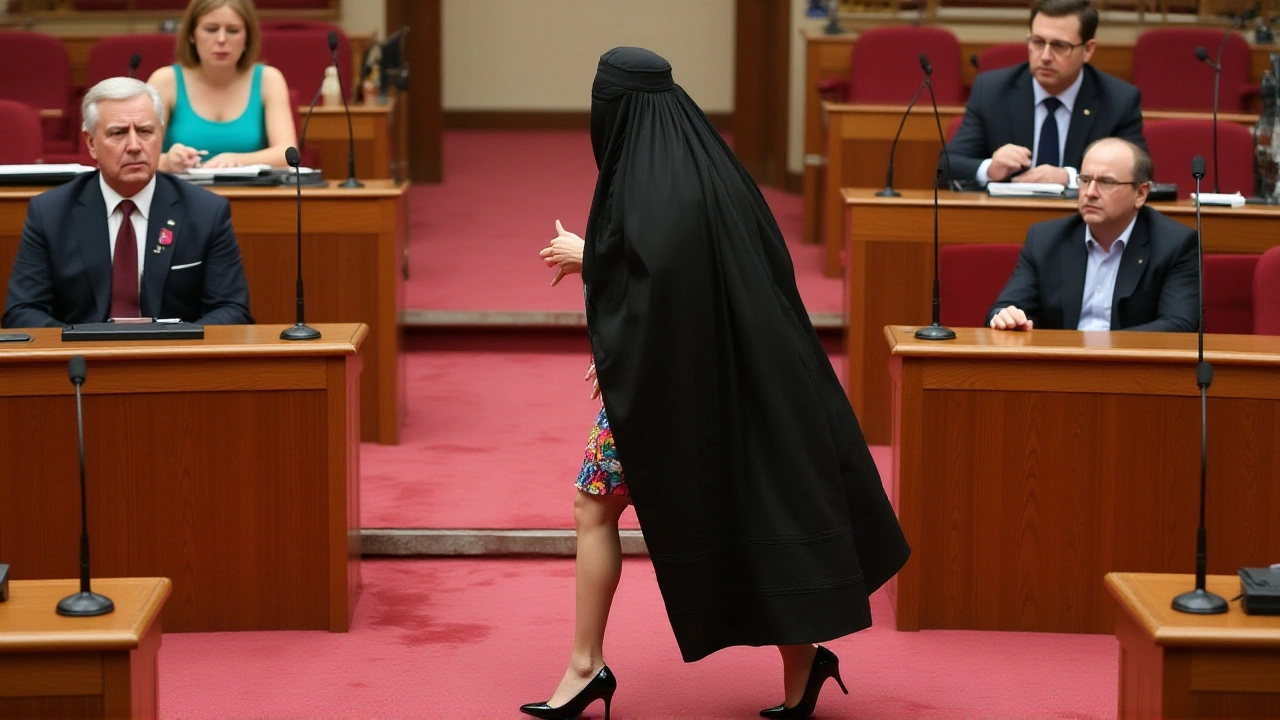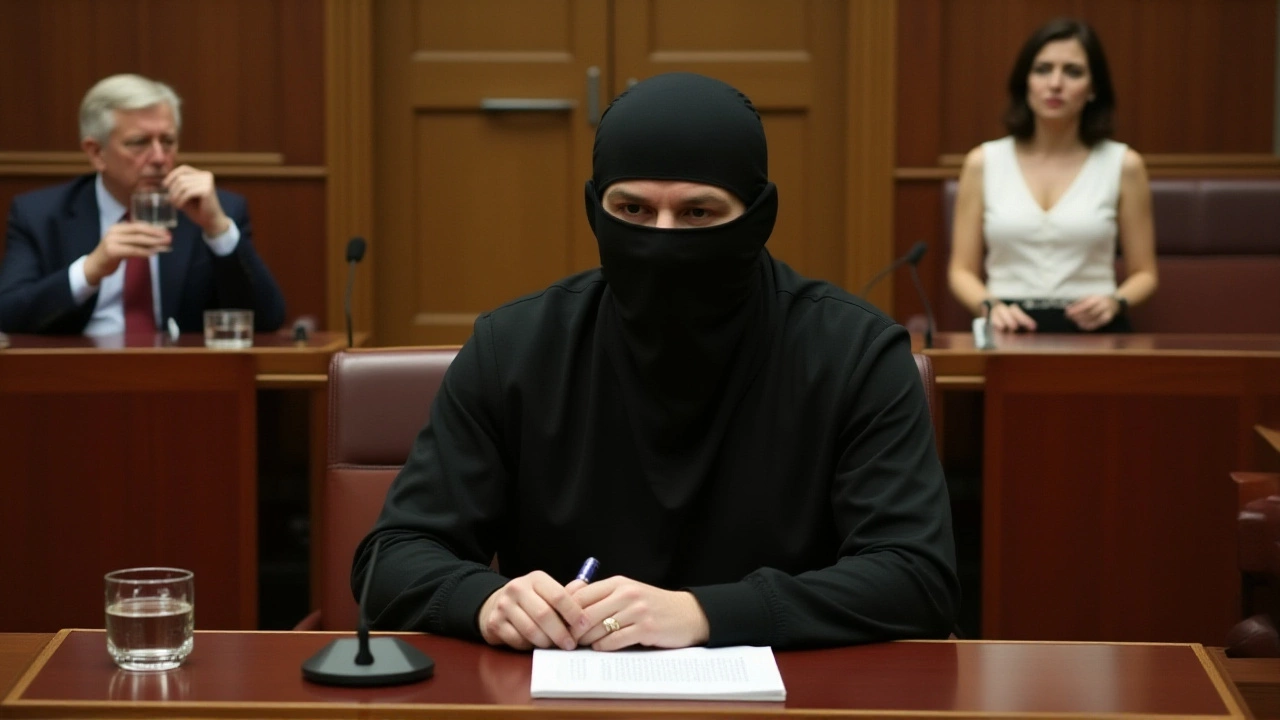Pauline Hanson Suspended Seven Days from Senate for Burqa Stunt, Repeating 2017 Controversy

When Pauline Lee Hanson walked into the Senate Chamber, Parliament House in Canberra on Tuesday, November 25, 2025, wearing a full-face burqa, she didn’t just break protocol—she reignited a firestorm that had smoldered for eight years. The stunt, identical to her 2017 protest, triggered an immediate uproar. Within hours, the Senate voted 38 to 29 to suspend her for seven days—the longest such penalty since Senator Doug McClelland was barred in 1979. The suspension, recorded in Hansard as S-20251125-07, means Hanson forfeits AUD $4,070.77 in salary and is barred from every corner of Parliament House until December 3. This isn’t just about clothing. It’s about boundaries. And for many, it’s about hate.
Why This Suspension Is Historic
The Senate’s decision didn’t come lightly. Senator Anne Ruston, the Government’s leader in the Senate, moved the motion at 12:03 PM AEDT, citing "deliberate contravention of Senate decorum and repeated contempt for parliamentary traditions." Independent Senator David Pocock seconded it, bluntly stating, "This is not about religious freedom but about maintaining the dignity of our parliamentary processes." The vote united the Australian Labor Party, Liberal Party of Australia, and The Greens—a rare coalition of opposition and government. The last time a senator faced a seven-day suspension was October 18, 1979, when McClelland disrupted Question Time. Hanson’s penalty now exceeds previous modern sanctions: Senator Scott Ludlam got three days in 2017 for dual citizenship; Senator Bob Day received five in 2016 for contempt. This isn’t just punishment—it’s a warning.The Burqa Stunt: A Pattern, Not a Mistake
Hanson’s 2025 act wasn’t impulsive. Hansard records show she entered Parliament House at 10:52 AM AEDT wearing the burqa, then stepped onto the Senate floor at 11:15 AM during routine proceedings. Security footage confirmed 12 officers were present. Two formally documented the breach of Parliament House Standing Orders 2017, Section 4.2.1, which prohibits attire that obstructs identification or disrupts proceedings. She’d done this before. On September 20, 2017, she wore the same garment during Question Time, declaring she wanted to "see what a burqa looks like inside Parliament." Then-Senate President Stephen Parry asked her to leave—but no suspension followed. Back then, the backlash was loud, but the consequences were quiet. This time, the Senate said: no more.Who’s Affected—and How
The suspension strips Hanson of all duties: no committee meetings, no votes, no access to parliamentary offices or resources. She’s removed from both the Senate Environment and Communications References Committee and the Legal and Constitutional Affairs Committee. Her absence leaves two key policy areas without her voice—though few mourn it. Financially, the penalty is precise: AUD $211,680 annual salary divided by 365 days, multiplied by seven, equals AUD $4,070.77. It’s not just symbolic—it’s calculated. The Commonwealth Officers (Parliamentary Members) Act 1992 governs this, and the Senate didn’t bend the rules.
Political Fallout and the Joyce Factor
Less than three hours after the suspension was announced, Hanson hosted Barnaby Thomas Gerard Joyce for dinner in her parliamentary office. Joyce, former Deputy Prime Minister and National Party leader, resigned from federal politics in 2022 but has been quietly courting right-wing support. At the dinner, he told staff he’d decide his political future "between Wednesday, November 26, and Sunday, November 30, 2025." That deadline lands on the final day of the parliamentary recess—and just hours before Hanson returns. It’s no coincidence. One Nation’s Sydney office issued no statement. But insiders say Joyce’s potential return could be the party’s lifeline. With Hanson sidelined, the timing couldn’t be more strategic.Condemnation from Human Rights and Muslim Communities
The Australian Human Rights Commission didn’t mince words. President Giridharan Sivaraman called the stunt "a deliberate act of blatant racism targeting Muslim Australian citizens." The statement, released at 3:45 PM AEDT, echoed sentiments from Muslim leaders across the country. In Melbourne, Mariam Veiszadeh, President of Australian Muslim Advocates, issued a joint condemnation: "This isn’t political theater. It’s dehumanization dressed as protest. Muslim women are not props for your agenda." Even constitutional experts acknowledged the gravity. Professor Anne Twomey of the University of Sydney told 7NEWS: "This suspension establishes a critical precedent for handling repeated contempt by senators, though it remains within the Senate’s absolute discretion under Section 49 of the Constitution." Translation: The Senate can do this again—and likely will.
What Happens Next?
Hanson returns to the Senate on December 4, 2025, at 10:00 AM AEDT. But the damage isn’t just procedural—it’s reputational. Her 17th disciplinary action in nine years has cemented her as the Senate’s most controversial figure. Whether Joyce joins One Nation will determine if the party survives her self-sabotage. Meanwhile, the burqa remains banned in some public institutions—but never in Parliament. That’s the irony: Hanson didn’t protest a law. She attacked a community. And the Senate finally said: enough.Frequently Asked Questions
Why was Pauline Hanson suspended for seven days instead of a shorter period?
The Senate imposed a seven-day suspension because this was Hanson’s second identical act of contempt since 2017. Previous penalties were light, and lawmakers viewed this as a deliberate, repeated challenge to parliamentary norms. The duration matches the 1979 suspension of Senator Doug McClelland, signaling that repeated misconduct warrants the harshest possible sanction under Senate Standing Order 194.
How does this affect Muslim Australians?
The Australian Human Rights Commission and Muslim advocacy groups condemned the stunt as racially motivated intimidation. Muslim women who wear the burqa for religious or cultural reasons are now more visibly targeted by political rhetoric. The incident has intensified fears of institutionalized Islamophobia, particularly as Hanson’s actions were framed as "protesting" a practice that affects fewer than 200 women in Australia.
What’s the legal basis for suspending a senator like this?
Section 49 of the Australian Constitution grants each house of Parliament the power to punish contempt. The Senate uses Standing Order 194 to enforce decorum, allowing suspension for disorderly conduct. No law is broken, but the Senate’s internal rules are binding. The vote requires only a simple majority, and the penalty is self-executing—no court involvement needed.
Why did Barnaby Joyce’s dinner with Hanson matter?
Joyce, a former major party leader, is seen as a potential savior for One Nation’s flagging influence. His presence at the dinner—just hours after Hanson’s suspension—signals serious political maneuvering. If he rejoins federal politics under One Nation, it could shift the balance of power in the Senate, especially with the upcoming 2025 federal election looming. His decision deadline of November 30 is critical.
Is wearing a burqa illegal in the Australian Senate?
No law bans it, but Parliament House Standing Orders 2017, Section 4.2.1, require attire that allows for clear identification and doesn’t disrupt proceedings. The burqa obstructs facial recognition and is interpreted as a deliberate provocation under those rules. The Senate has never formally banned religious garments—but it has consistently ruled that attire meant to disrupt or symbolically protest is unacceptable.
What’s the financial impact of the suspension on Hanson?
Hanson forfeits AUD $4,070.77 for the seven-day period, calculated from her annual salary of AUD $211,680 under the Commonwealth Officers (Parliamentary Members) Act 1992. She also loses access to staff, travel allowances, and office resources. While the sum seems modest, the symbolic loss is immense—it’s the first time her salary has been clawed back for conduct, not for legal wrongdoing.




